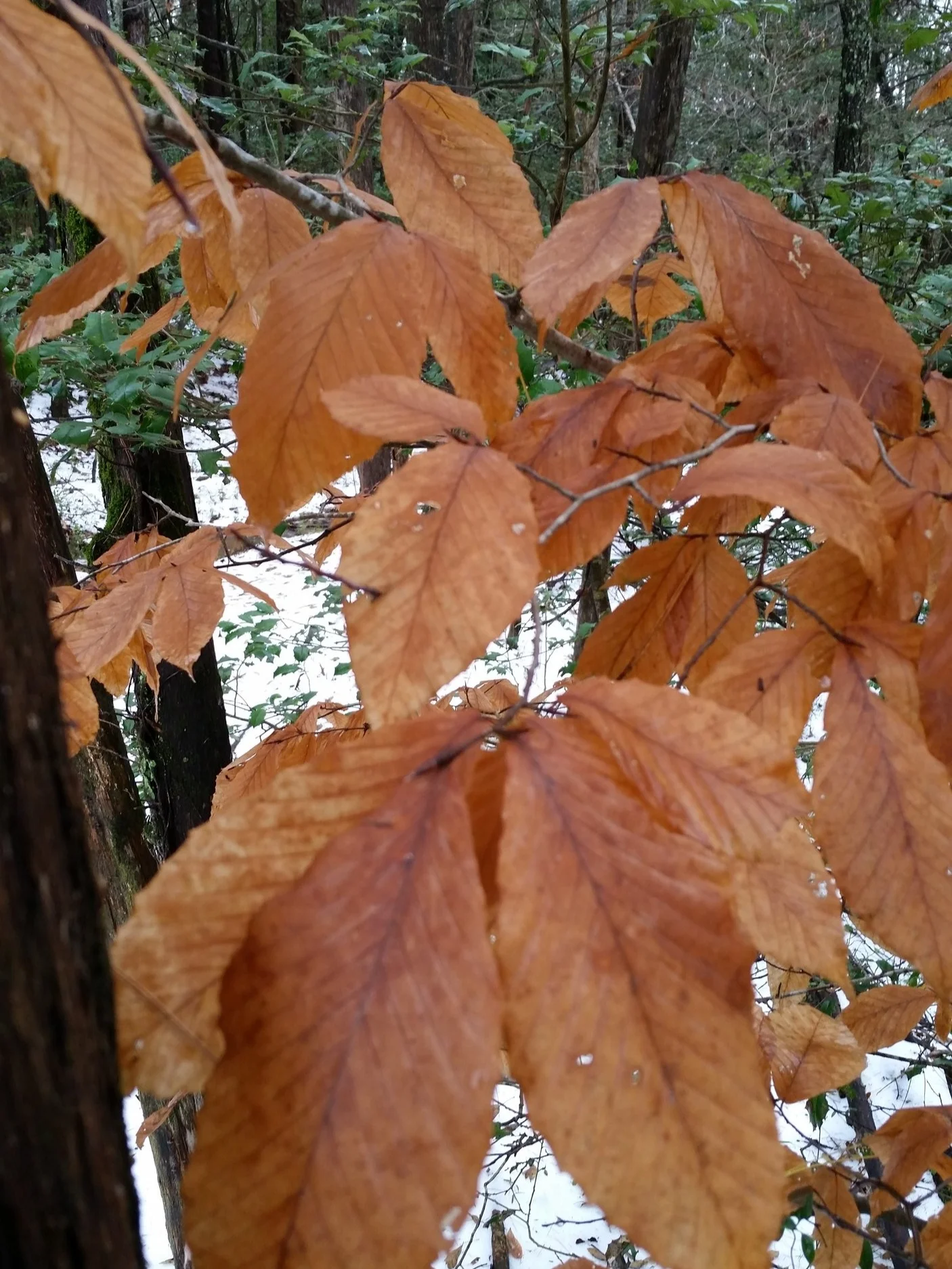My northern friends poke fun at the way we experience snow in the Deep South. The mere mention of the “S” word by weather forecasters causes a panicky stampede as grocery store shelves are emptied of milk, bread, beer, toilet paper, cigarettes and baby diapers. A non-Southern observer might think we are preparing for a blizzard. Advice: Just go with it. It’s who we are.
Last week brought the trifecta of winter weather to upstate South Carolina: cold rain, ice and snow. Magnolia trees all over our farm surrendered their branches to ice. Pines cracked in pain before shedding large limbs. Native cedars, on the other hand, gave no audible indications before suddenly jettisoning tree tops.
The pungent smell of damaged pines and cedars inspired a walk through the woods. The shallow snow allowed me to trace the travels of deer, rabbit and coyote. Leaves are gone from almost all deciduous trees, which make the beech trees, Fagus grandiflora, prominent by contrast. Winter sunlight causes the tan leaves glow.
Beech trees hold their leaves through the winter, only shedding when new growth arrives. The term for plants that retain their leaves is marcescence. There are two theories as to why certain trees refuse to let go of the old foliage. One says they retain leaves to serve as self-mulch in the spring, thus serving as their own recycler of nutrients while retaining soil moisture. The other theory says it is the tree’s way to protect tender buds from being eaten by deer or other animals.
Beech leaves afford birds a bit of protection from weather and predators, making the trees a perfect place to hang your winter birdfeeder. Birds also enjoy the tree’s nuts as a food source. Beeches typically reach 50-70 feet but can reach much greater heights (100+ feet). They are best enjoyed in a woodland setting rather than in a home landscape, where their shallow roots make it difficult to grow grass underneath. They are also prone to suckering. Trees prefer a little bit of shade, so a naturalized setting is perfect. Male and female flowers occur on the same plant but in separate clusters. Nuts are enclosed in prickly husks.
If you encounter one of these beauties in the woods, take a moment to appreciate the smooth gray bark, often spotted with lichens. Especially notice the trunks of mature specimens. With a little imagination, the trunk base looks like an elephant’s feet.
Beech leaves in winter.
Bronze/tan leaves glow against a dusting of snow.

